POP TIPS: harvesting late summer and early fall fruits!
12 views
Skip to first unread message
Phil Forsyth
Aug 17, 2022, 8:45:48 AM8/17/22
to Philadelphia Orchard Group
Philly Orchardists,
This is one of our favorite times of year, as the earliest main crop figs are beginning to ripen! These are generally small, dark fruited cultivars like Chicago Hardy, Celeste, Ronde to Bordeaux, etc.
We often think of pears and apples as fall fruits, but many varieties are actually ripe for picking as early as mid August! European pears can be especially tricky, as they don't ripen on the tree and need to be picked while still very firm. Read below for more on the best timing for picking pears, Asian pears, apples, figs, almonds, jujubes, and paw paws.
POP TIPS: HARVEST OF LATE SUMMER AND EARLY FALL FRUITS
After years of cultivation and year-round attention to orchard maintenance, it may finally be time to harvest from your fruit trees! It is often quite simple to tell when fruits are ready, as ripe fruits are well-colored and are easily plucked off the spur, with little resistance.
The ground color, or the color of the fruit's skin disregarding any red or other highlight coloration areas, is a good way to determine whether or not the fruit is ready to be harvested. However, if you have no experience harvesting, or if you have some unfamiliar fruits in your space, have no fear! Below is a guide, and you can always contact us or send us photos with questions.
Remember to track total yield of your harvests for POP's annual end-of-season survey! Record your harvests using our handy POP Harvest Tracking Sheet.
If you ever find that you have excess harvest, please contact sim...@phillyorchards.org to explore the possibility of setting up a POPHarvest community gleaning date so that nothing goes to waste!
As always, one of the best ways to determine whether or not a fruit is ripe is by conducting a taste test. When a fruit appears to be ripe, and separates easily from the spur, try a bite of it to see how it tastes.
European Pears
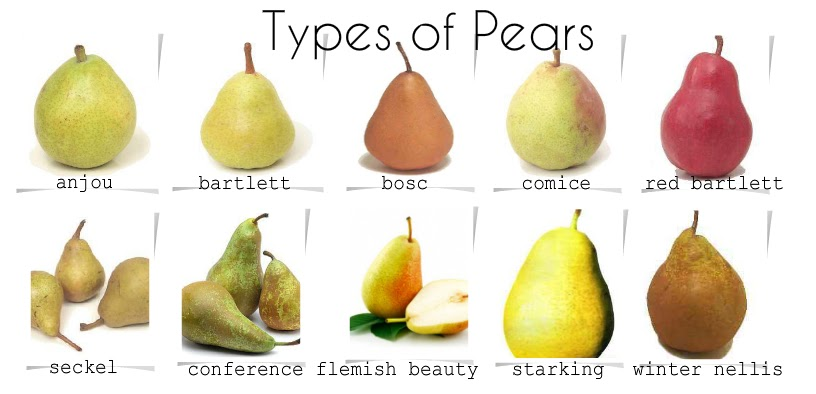
Pears are different from most other fruits in that they need to ripen off the tree before they're ready to eat. European pears should be picked when the ground color of the fruit has turned pale green to slightly yellow. If you wait to pick them until they actually soften, the quality will be poor and they'll quickly rot in storage.
There are two types of European pears that are commonly grown in orchards: summer pears and winter pears. Summer pears are harvested earlier and can be kept at room temperature until ready to eat. Winter pears are harvested later and should be placed in cold storage (44º or below) for at least three weeks before they are ready to eat.
Fall pear varieties (these are generally picked in late summer):
Fall pear varieties (these are generally picked in late summer):
Bartlett, Moonglow, Harrow, Potomac, Shenandoah, Clapps Favorite, Orcas, etc
Winter pear varieties (these are generally picked in early fall):
Anjou, Bosc, Comice, Potomac, etc
European pears that may ripen on the tree:
Seckel, Lincoln
Asian pears
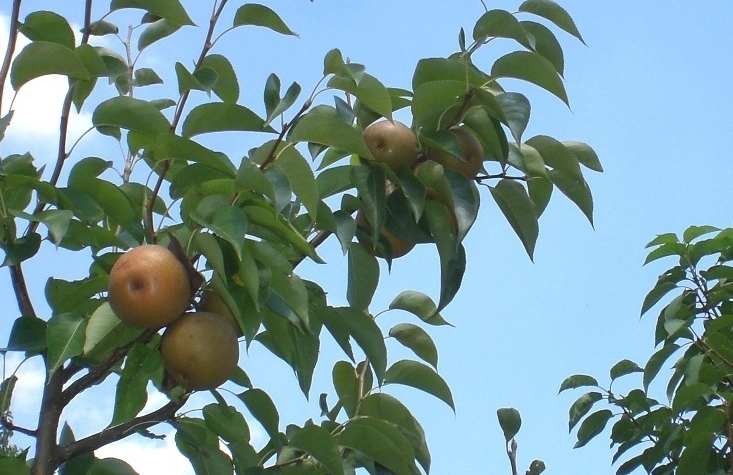
Asian pears are ready to pick and eat as soon as they look ripe on the tree (usually sometime late August through early September). Make sure there are no areas of green left in the ground color, and try a sample before harvesting them all. Some varieties appear more brown, some more yellow, and others a bit more green. If you're worried about pest pressure, harvesting them a bit early may help, and allowing them to ripen off the tree will be just fine.
Apples
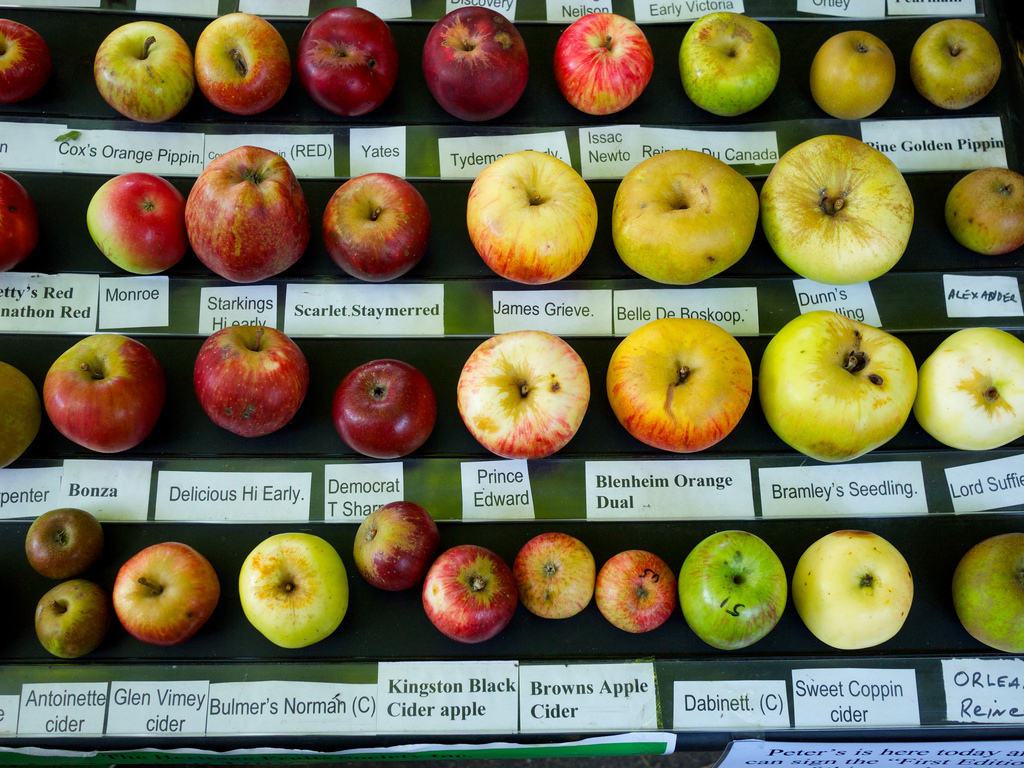
The primary fig crop starts generally ripening in mid August to early September (with proper winter protection, an even earlier 'Breba' crop is sometimes possible). Figs should be left to ripen mostly on the tree, although they will continue to soften and sweeten for a few days if picked close to ripe. Unripe figs are green, but different varieties ripen to shades of red, purple, brown, yellow, and some even stay green! The neck of the fruit will soften and wilt slightly and the fruit will hang down when fully ripe. It is best to pick the fruit with some of the stem attached to delay spoilage. Figs will bruise easily so it is important to handle with care and not pack them tightly on top of one another.
Hardy Almonds
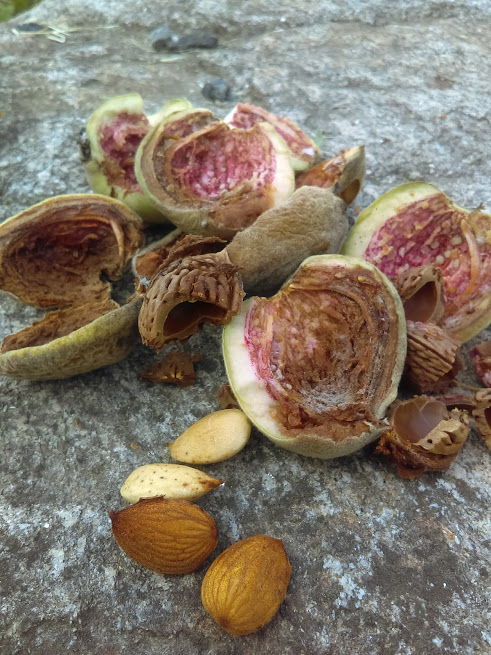
The almonds that grow best in our climate zone are actually a cross between a peach and an almond ('Reliable' and 'Hall's Hardy' are cultivars we've planted with good success). They are best to harvest in late August to early October. The fruit is ready for harvest when it starts to split, and some may fall to the ground. Shake the tree to allow the rest of the hulls to fall to the ground or onto a tarp.
Remove the hull, compost them, and leave the shells with their kernels (nuts) inside to dry for two days. When the kernel produces a rattling sound, it is ready. Crack the shell and remove the kernel. The kernel should be crisp, not bendable. Nuts can be eaten raw, boiled, or roasted at 350 degrees for about 20-30 minutes until slightly light brown. Use a very strong nut cracker, hammer, or rubber mallet.
Jujubes
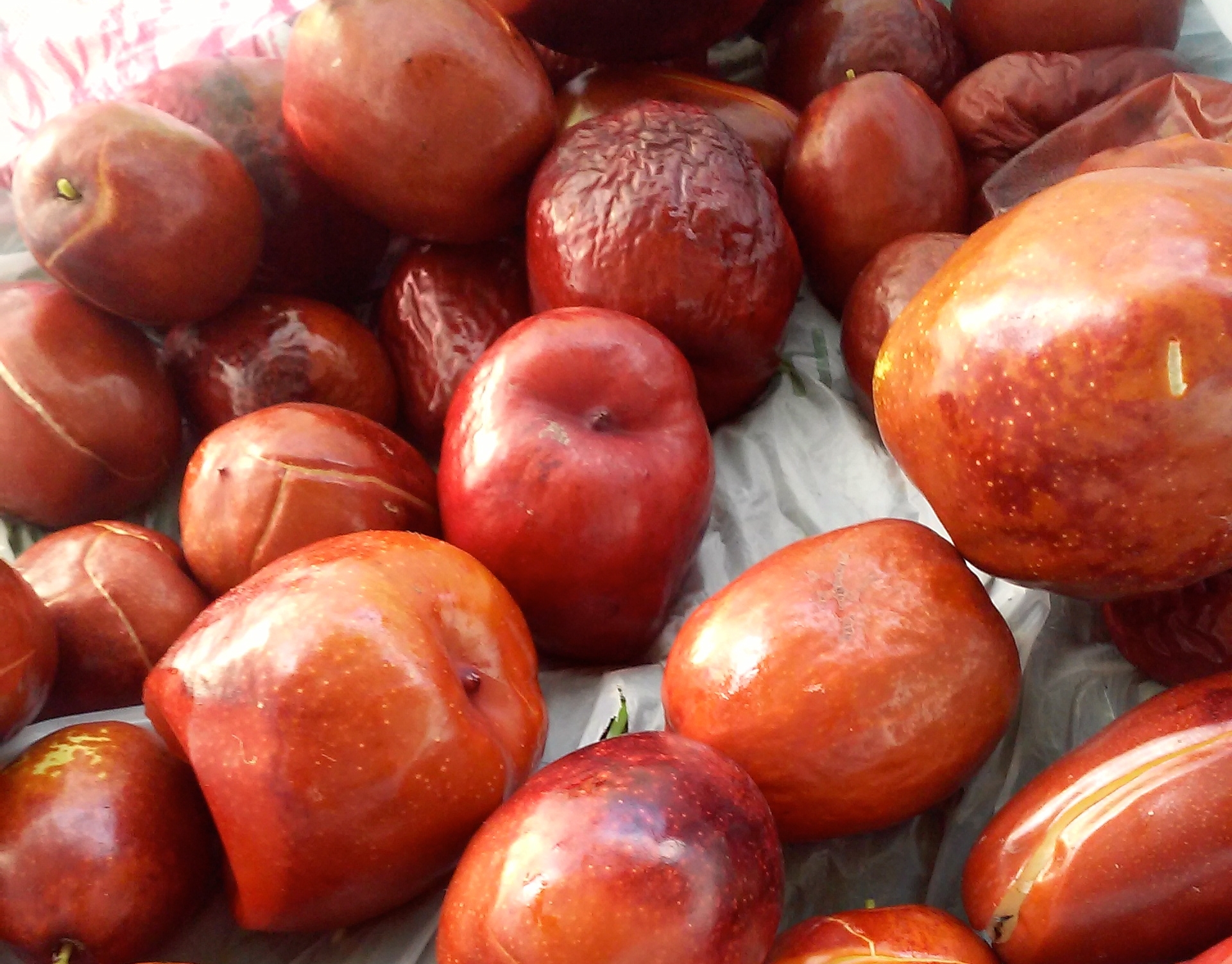
Jujubes, or Red Dates, can be harvested at different stages according to taste preference. When still firm, smooth and green, the fruits have a crisp texture and are more pear-like in flavor and less sweet. More typically, they are harvested later when they're completely red-brown. Jujubes will continue to ripen on the tree, getting progressively sweeter, softer, and wrinklier and taking on a mildly banana-like flavor. Harvest time is generally late August to early October. POP's personal preference is to pick them as they are just turning from green to red-brown, being both crisp and mildly sweet!
Pawpaws
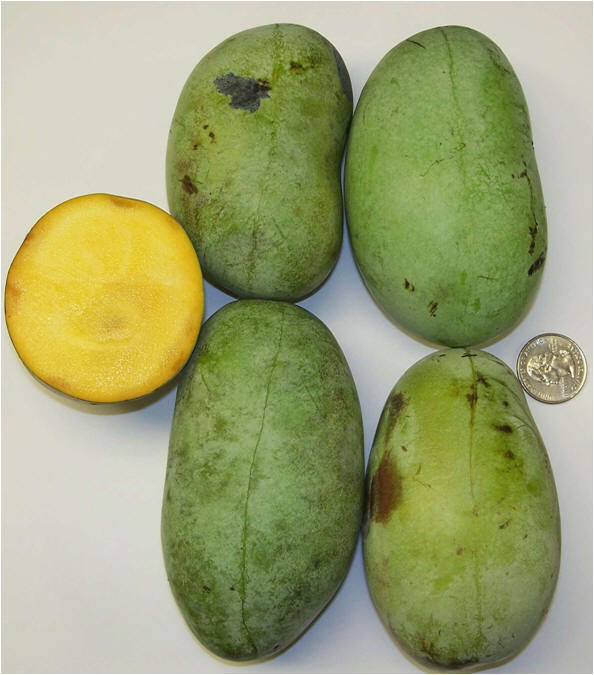
Pawpaws generally let you know they are ready to eat by falling off the tree and wild pawpaws are most commonly harvested fresh from the ground (usually early to mid September). In an orchard setting, they can also be harvested from the tree as the unripe green fruit begins to soften and take on a yellower coloration. They'll have a greenish to yellow-brown skin and soft, custard-like, yellow-orange flesh. Bruising and browning of the skin is generally fine, as long as the flesh hasn't turned brown. Pawpaws don't have a very long shelf-life, so refrigerating or freezing flesh is recommended!
Equipment
One common problem with picking fruit is accessibility. Often fruits in trees are too high to pick from the ground. A fruit picker is a good investment to avoid this problem. Fruit pickers are poles with baskets on the end which allow you to pluck off high fruits and capture
them
in the basket. The West Philly Tool Library has some fruit pickers available for borrowing or see links below for purchasing. 
Wearable fruit picking bags or buckets allow you to quickly and efficiently store your fruit as it is being picked.
Purchase fruit picking bags/buckets:
Purchase fruit picking bags/buckets:
Resources for harvesting fruit:
https://byf.unl.edu/StoringApplesPears
http://lancaster.unl.edu/hort/nebline/applestorage.shtml
http://extension.wsu.edu/maritimefruit/pages/harvestandstorage.aspx
Video about harvesting apples:
http://www.youtube.com/watch?v=JyvEKwaQtfk
https://byf.unl.edu/StoringApplesPears
http://lancaster.unl.edu/hort/nebline/applestorage.shtml
http://extension.wsu.edu/maritimefruit/pages/harvestandstorage.aspx
Video about harvesting apples:
http://www.youtube.com/watch?v=JyvEKwaQtfk
This edition of POP TIPS originally prepared
by Phil Forsyth and Robyn Mello
with assistance from POP interns Sophia Taylor and Tina Kalakay.Phil Forsyth, Co-Executive Director
Philadelphia Orchard Project
Pronouns: he/him
Reply all
Reply to author
Forward
0 new messages

